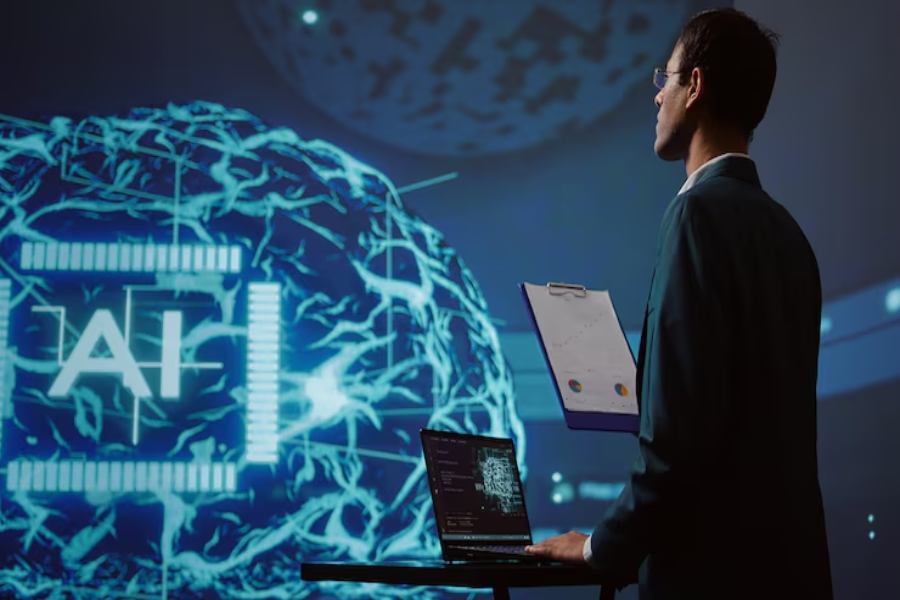Visual Regression Testing for Employer-Branded Career Sites Using AI Software Testing Tools

Employer-branded career sites are often the first touchpoint for top talent. Any unintended layout shift, broken link, or style drift—whether caused by a CMS update, A/B test rollout, or third-party widget change—can damage your employer brand and lead applicants to abandon the process. Visual regression testing offers a systematic way to catch these issues before they go live. By leveraging AI software testing tools, teams can automate visual comparisons, self-heal tests when elements move, and integrate checks into their CI/CD pipelines for continuous quality assurance.
Introduction
In competitive talent markets, your career site must reflect your company’s professionalism and brand consistency. Whether you’re promoting open roles or showcasing your culture, any visual glitch can undermine credibility. Manual link checks and spot-testing layouts on a handful of browsers are no longer sufficient given the pace of web changes. Visual regression testing automates screenshot comparison, highlighting differences pixel-by-pixel or via intelligent AI-driven analysis. This ensures that every deployment—no matter how small—maintains a flawless candidate experience.
Why Visual Regression Matters for Career Sites
- First Impressions Count: A layout break or misaligned logo on your careers page can deter applicants instantly.
- Brand Consistency: Consistent typography, color palettes, and imagery reinforce your employer brand equity.
- Legal and Accessibility Compliance: Layout shifts can affect screen reader flow or touch-target sizes, risking ADA violations.
- High Traffic During Campaigns: During job fairs or marketing pushes, even a brief visual regression can impact hundreds of visitors.
- Reduced Support Overhead: Catching issues early saves HR and IT teams from emergency hotfixes and candidate complaints.
By automating visual checks across browsers and viewports, you safeguard both brand and candidate experience.
Common Causes of Visual Drift
- CMS Updates & Theme Changes
Routine updates to WordPress, Drupal, or Headless CMS themes can introduce CSS overrides that shift layouts. - A/B Test Rollouts
Experimentation platforms may inject scripts or modify DOM hierarchies, impacting element positioning or styling. - Third-Party Widget Integrations
Embeds like chatbots, analytics trackers, or video players can load asynchronously and alter page layout after initial render. - Responsive Design Breakpoints
New breakpoints or media-query adjustments for mobile views can misalign menus, images, or grid layouts. - Font and Asset Changes
Swapping fonts or updating hero images can alter text flow, line breaks, or image aspect ratios.
Identifying these unintended shifts manually is error-prone; visual regression testing automates detection.
Fundamentals of Visual Regression Testing
- Baseline Capture: Take reference screenshots of key pages across target browsers and viewports.
- Comparison Engine: On each build, capture new screenshots and compare against baselines using pixel-diff algorithms or AI-powered image similarity metrics.
- Thresholds & Tolerances: Define acceptable variance (for anti-aliasing, minor rendering differences) to avoid noise.
- Reporting & Triage: Generate diff images with highlighted changes—triaged as cosmetic versus functional regressions.
- Baseline Management: Approve intentional visual updates by updating stored baselines under version control.
While basic pixel-diff tools exist, modern AI software testing tools enhance accuracy by ignoring irrelevant differences (e.g., dynamic banners) and focusing on structural changes that impact user experience.
Leveraging AI Software Testing Tools
AI-driven platforms bring key advantages:
- Self-Healing Locators: When the DOM structure changes, AI identifies elements visually—reducing test maintenance.
- Smart Diffing: Instead of pixel-perfect matches, AI models detect layout shifts or style drifts that matter, filtering out trivial changes.
- Dynamic Test Generation: By crawling your career site, AI autonomously generates visual checkpoints for new pages or components.
- Cross-Browser Emulation: Run captures on Chrome, Firefox, Safari, and mobile emulators in parallel—ensuring coverage.
- Continuous Monitoring: Schedule nightly or post-deployment visual checks with automated alerts for unexpected drift.
These capabilities mean your QA team spends less time updating tests and more time analyzing meaningful regressions.
Step-by-Step Implementation Guide
6.1 Define Your Scope
- Select Key Pages: Careers home, job listing pages, job detail, application form, and thank-you confirmation.
- Identify Viewports: Desktop (1920×1080), tablet (768×1024), and mobile (375×667).
- List Browsers: Chrome, Firefox, Safari, Edge.
6.2 Baseline Capture
- Deploy your stable production build.
- Use the AI tool’s crawler or CLI to capture screenshots across all defined environments.
- Store baselines in a version-controlled repository.
6.3 Integrate into CI/CD
Add a visual regression stage to your pipeline (e.g., GitHub Actions, Jenkins):
| – name: Visual Regressionrun: ai-testvisual compare –baseline ./baselines –current ./screenshots |
- Configure thresholds and ignore rules (e.g., dynamic timestamps or rotating banners).
- Fail the build or post a warning based on severity rules.
6.4 Review and Approve
- Inspect diff reports in the AI tool’s dashboard.
- Approve legitimate design updates by promoting new screenshots to baseline.
- Log or file issues for unintended regressions.
6.5 Maintain Over Time
- Automate Baseline Updates: When a new design cycle starts, bulk-approve new baselines.
- Expand Coverage: Add new pages or components as your career site grows.
- Refine Tolerances: Adjust AI sensitivity to balance noise versus true positives.
Best Practices for Career Site QA
- Prioritize High-Traffic Pages
Begin by identifying the pages with the highest candidate traffic—typically your careers homepage, job listing overview, and individual job detail pages. Focus your initial visual regression efforts here to maximize impact; catching a layout shift on these critical touchpoints prevents the greatest number of applicants from encountering broken experiences. Use your web analytics (e.g., Google Analytics, Hotjar) to validate which URLs deserve the highest testing cadence. - Segment Tests by Component
Rather than treating each page as a monolith, break your visual tests into smaller, reusable component captures—such as the navigation bar, footer, job card grid, and apply-button widget. This modular approach accelerates test execution (since you’re only re-capturing changed components), simplifies triage (you immediately know which UI area regressed), and makes it easier to onboard new pages that reuse existing elements. - Use Feature Flags
When rolling out A/B tests or dark-launching new designs, wrap your changes in feature flags. This allows your visual regression framework to capture and compare both “control” and “variant” states side by side. If a flagged feature causes unintended drift in a shared component—like a global header—you’ll spot it in both variants without delaying the experiment. - Automate Notifications
Speed matters when visual drift occurs. Integrate your visual regression tool’s alerts with Slack, Microsoft Teams, or email notification channels so that front-end engineers and product managers receive instant diffs and severity ratings. Craft clear messages that include links to the diff images and context (branch name, commit hash) so teams can triage and resolve issues before candidates hit the live site. - Document Acceptance Criteria
Establish a clear rubric defining what constitutes a critical change (e.g., misaligned form fields, broken CTAs, missing images) versus a cosmetic drift (e.g., few-pixel shifts in non-interactive graphics, minor color variations). Document these criteria in your QA handbook and configure your AI software testing tools to apply different thresholds or alert levels accordingly. This shared vocabulary streamlines review workflows and reduces false-positive noise. - Combine with Functional Tests
Visual fidelity is only half the battle. Pair your screenshot comparisons with automated functional checks—such as form-submission scripts, link-validation crawlers, and accessibility audits—to ensure that every “Look” also “Works.” For example, after verifying that your “Apply Now” button is visually correct, an end-to-end test should confirm that it actually triggers the correct application form submission and confirmation message. - Schedule Regular Baseline Reviews
As your career site evolves—through seasonal themes, employer-brand refreshes, or CMS upgrades—periodically review and approve new baselines to reflect intentional design updates. Treat this as a lightweight “design release” process: capture the updated visuals, annotate expected changes, and promote the new baselines in source control. Regularly pruning obsolete snapshots keeps your test suite lean and focused on current UI components. - Monitor Flakiness and Trends
Track flakiness metrics by logging how often each visual test triggers a diff. High-flakiness components (e.g., dynamic carousels or rotating banners) may need targeted ignore zones or more robust AI-driven diff configurations. Use trend dashboards to spot patterns—such as a sudden increase in mobile view regressions following a CSS library upgrade—and adjust your testing scope or thresholds proactively. - Foster Cross-Functional Collaboration
Visual QA impacts design, development, and recruiting stakeholders alike. Hold periodic review sessions where designers sign off on approved baselines, developers address implementation bugs, and recruiters share candidate feedback related to site usability. This inclusive approach ensures that visual regression testing process remains a shared responsibility and that your employer-brand experience stays polished across every deployment.
Case Study: Staffing Firm Career Portal
Background: A midsize staffing agency redesigned its career portal to match a new employer-brand theme. Post-launch, several job detail components shifted off-screen on mobile, causing drop-offs.
Solution:
- Adopted an AI software testing tools platform for visual regression.
- Captured baselines of job list and detail pages across three viewports.
- Integrated checks into their Bitbucket Pipelines—running on every merge to staging.
- Detected a CSS conflict in the mobile grid layout within minutes of deployment.
- Rolled back the update, fixed the break, and re-approved baselines.
Outcome: Zero visual regressions reached production thereafter, and candidate drop-off rates on mobile decreased by 18%.
Integrating Visual Tests into CI/CD
- Pipeline Stage Placement: Run visual checks after unit and integration tests, before approval gates.
- Parallel Execution: Leverage cloud agents for concurrent captures, reducing pipeline time.
- Fail-Fast vs. Report-Only: Configure critical pages to fail the build on regressions, while less-critical pages generate warnings.
- Artifact Storage: Archive screenshots and diffs as pipeline artifacts for audit trails.
- Automated Rollbacks: For severe regressions, auto-trigger rollback pipelines or feature-flag toggles.
This tight integration empowers development teams to catch UI issues early in the deployment process.
Measuring Impact and ROI
| Metric | Before Visual Regression | After Implementation | Improvement |
| Time to Detect UI Issues | 3 days | <1 hour | –97% |
| Candidate Drop-Off Rate (Mobile) | 12% | 9.8% | –18% |
| Manual QA Hours per Release | 10 | 2 | –80% |
| Number of Live Visual Defects per Month | 5 | 0 | –100% |
These results demonstrate that automated visual regression testing not only preserves brand integrity but also delivers significant time and cost savings.
Conclusion
Maintaining a flawless, consistent employer-branded career site is essential for attracting and retaining top talent. Visual regressions—whether caused by CMS patches, A/B tests, or third-party embeds—can slip through manual checks and damage candidate trust. By adopting AI software testing tools for visual regression testing, organizations automate pixel-level and AI-driven comparisons, self-heal against minor DOM changes, and integrate checks into their CI/CD pipelines for continuous assurance. The result is a reliable, on-brand candidate experience that scales with development velocity.
FAQ
How often should I run visual regression tests?
Ideally, on every pull request affecting front-end code, plus scheduled nightly full-site checks to catch external changes.
What viewports are most critical for career sites?
Desktop (full HD), tablet (768×1024), and mobile (375×667) cover the majority of visitor devices.
Can AI tools ignore dynamic content (e.g., rotating banners)?
Yes—most platforms allow you to mask or declare ignore zones so that only static elements are compared.
